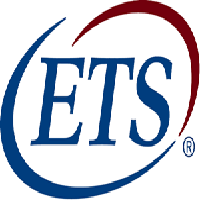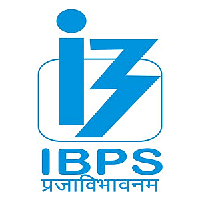
COMEDK UGET
Based on the latest pattern | Detailed Analysis
Sample Test Paper-1
 99 Questions
99 Questions 100 Marks
100 Marks
COMEDK UGET | Mock Test 1
 180 Questions
180 Questions 180 Marks
180 Marks 180 Mins
180 Mins
Syllabus | PHYSICS | CHEMISTRY | MATHEMATICS |
COMEDK UGET | Mock Test 2
 180 Questions
180 Questions 180 Marks
180 Marks 180 Mins
180 Mins
Syllabus | PHYSICS | CHEMISTRY | MATHEMATICS |
COMEDK UGET | Mock Test 3
 180 Questions
180 Questions 180 Marks
180 Marks 180 Mins
180 Mins
Syllabus | PHYSICS | CHEMISTRY | MATHEMATICS |
COMEDK UGET | Mock Test 4
 180 Questions
180 Questions 180 Marks
180 Marks 180 Mins
180 Mins
Syllabus | PHYSICS | CHEMISTRY | MATHEMATICS |
COMEDK UGET | Mock Test 5
 180 Questions
180 Questions 180 Marks
180 Marks 180 Mins
180 Mins
Syllabus | PHYSICS | CHEMISTRY | MATHEMATICS |
The Consortium of Medical, Engineering and Dental Colleges of Karnataka (COMEDK) organizes the COMEDK UGET exam. The exam is conducted for admissions to the B.Tech courses in the various colleges in the state of Karnataka.
Conducting Body: Karnataka Professional Colleges Foundation, in their attempt to offer an efficient, fair and objective testing method to determine the merit of students seeking admission to the member institutions, have formed "Consortium of Medical, Engineering and Dental Colleges of Karnataka (COMEDK)".
Important Dates:
|
Events |
Dates |
Mode |
Link |
|
Registration Date |
15/02/2023 |
Online |
|
|
Application Date (Last Date) |
24/04/2023 |
||
|
Admit Card |
18/05/2023 28/05/2023 |
||
|
Exam Date |
Will be updated soon |
||
|
Result Date |
Will be updated soon |
Selection Process: The selection of candidates is made on a 2- stage performance evaluation as under
-
Stage I: Written Test
-
Stage II: According to the marks of the candidate, the merit list will be published by the Board on the website. Qualified candidates will be shortlisted in the merit list for the counselling process.
Exam Pattern: The COMEDK UGET 2019 exam pattern is as follows. The examination will be conducted online and the total duration of the examination will be 3 hours. The total time duration of the Physics and Chemistry section will be 2 hours and the Mathematics section will be of 1 hour
|
S. No. |
Sections |
No. of Questions |
Marks |
|
1. |
Physics |
60 |
60 |
|
2. |
Chemistry |
60 |
60 |
|
3. |
Mathematics |
60 |
60 |
|
Total |
180 |
180 |
Note:- There is no provision of negative marking.
Eligibility:
-
Age Limit:- Upper age limit is 25 years.
- Educational Qualification:
For B.Tech courses:
-
10+2 or 2nd PUC with 45%(40% for SC/ ST and OBC of Karnataka) aggregate marks in Mathematics, Physics, English, and Chemistry as compulsory subjects with any one of the following optional subjects- Chemistry/ Biology/ Biotechnology/ Computer Science/ Electronics.
For B.E./ B.Tech (Bio-Technology):
-
10+2 or 2nd PUC with English, Mathematics, and Physics along with any one of the following as an optional subject-
Chemistry/ Biology/ Biotechnology/ Computer Science/ Electronics as one of the subjects.
For B.Arch:
-
There shall be no exam conducted for the candidates applying for the B.Arch course.
-
(10+2) or 2nd PUC with aggregate marks of at least 50% (45% for SC/ ST/ OBC of Karnataka) Mathematics and Physics along with Chemistry/ Biology/ Biotechnology/ Computer Science/ Electronics as one of the subjects or (10+3) Diploma.
-
NATA qualified.
Syllabus/Subjects:
-Physics Syllabus:
|
Topics |
Chapters |
|
Heat & Thermodynamics |
|
|
Oscillation |
|
|
Electrostatics |
|
|
Thermal and Chemical Effects of Currents |
|
|
Motion |
|
|
Current & Electricity |
|
|
Alternating Current |
|
|
Physical-world & Measurement |
|
-COMEDK Chemistry Syllabus:
| Topics | Chapters |
| Environmental Chemistry |
|
|
Chemical Reactions and Kinetics |
|
|
Nuclear Chemistry |
|
|
Chemistry in Action |
|
|
Polymers |
|
|
Coordination Chemistry and Organometallics |
|
|
Biomolecules |
|
|
Transition Metals including Lanthanides |
|
|
Chemistry of Carbon Compounds |
|
|
Chemistry of Biological Processes |
-COMEDK Mathematics Syllabus:
|
Topics |
|
|
3D Geometry |
|
|
Vectors and Three-Dimensional Geometry |
|
|
Circles |
|
|
Differential Calculus |
|
|
Matrices and Determinants |
|
|
Probability |
|
|
Differential Equations |
|
|
Integral Calculus |
|
|
Exponential and Logarithmic Series |
|
|
Correlation and Regression |
CONCLUSION: The COMEDK exam offers a great opportunity for the candidatess who wish to pursue Engineering programmes through various colleges in the state of Karnataka. Interested candidates can apply for the COMEDK UGET exam through the official website. The team of estudentbook wishes you all the best for your upcoming future.
FAQs:
Ques 1. Can a candidate fill the application form for more than one programme?
Ans. Yes, students have to submit a separate application for each course.
Ques 2. Is there any negative marking in COMEDK UGET?
Ans. Yes, Marks will be deducted for every incorrect answer.
Ques 3. Are there separate papers for different courses?
Ans. No, The exam available only in the English language.
Ques 4. Can a candidate take the entrance test from any computer?
Ans. Yes, the exam will be conducted through online mode (Computer Based Test).
Ques 5. Is COMEDK open to Karnataka students only?
Ans. No. The exam is open to all eligible candidates in India.
Ques 6. Is there an age limit to appear for COMEDK?
Ans. The eligibility criteria for applicants seeking admission to BTech courses offered through COMEDK would be as per the norms of AICTE.
Ques 7. Will admissions to BArch courses be based on COMEDK written exam?
Ans. No. Applicants interested to seek admission to BArch courses in the state must have appeared for NATA. However, the allocation of seats in COMEDK colleges will be done through COMEDK counselling.
Ques 8. I belong to the SC category but I am from Delhi. So, will I get the benefit of the lower eligibility marks in the qualifying examination?
Ans. No, only the SC/ST and OBC applicants belonging to Karnataka are eligible to get the advantage of lower eligible qualifying marks.
Ques 9. I have completed a degree course. Can I apply for COMEDK?
Ans. Applicants who possess a degree course are not qualified to apply for COMEDK UGET.
Ques 10. Can I upload a black and white photograph in the COMEDK Application Form?
Ans. No, the candidates need to upload a passport size colored photograph which should not be more than 3 months old.

.jpg)

.jpg)

.jpg)
.jpg)
.jpg)
.jpg)


